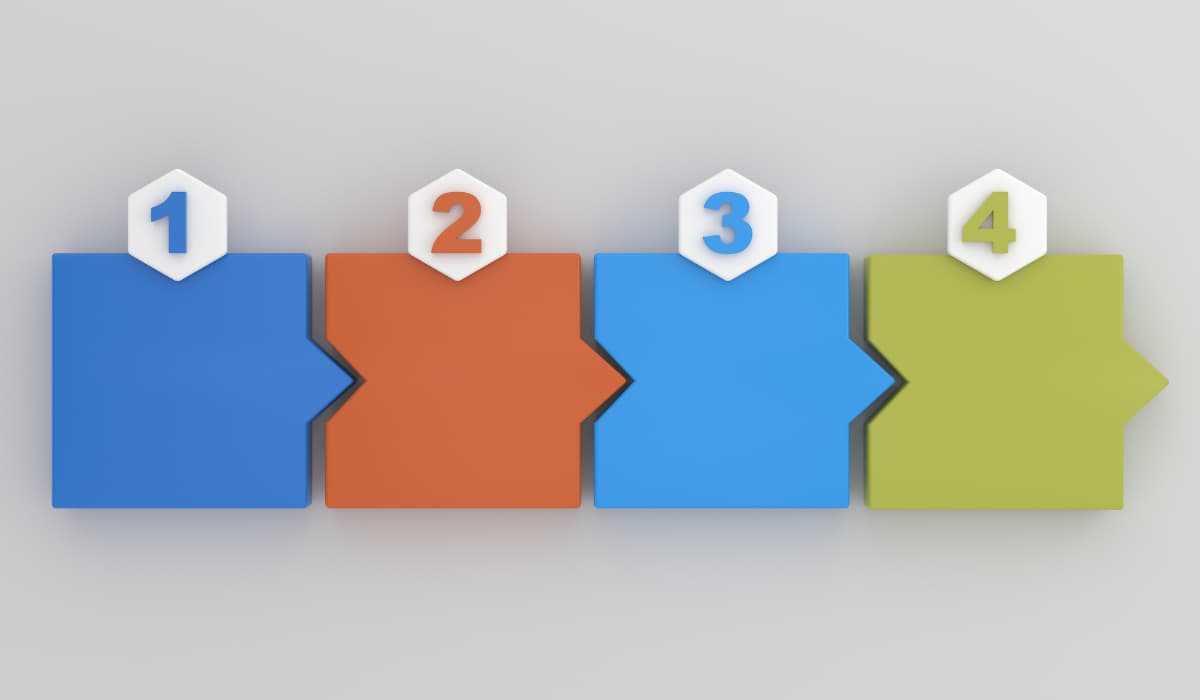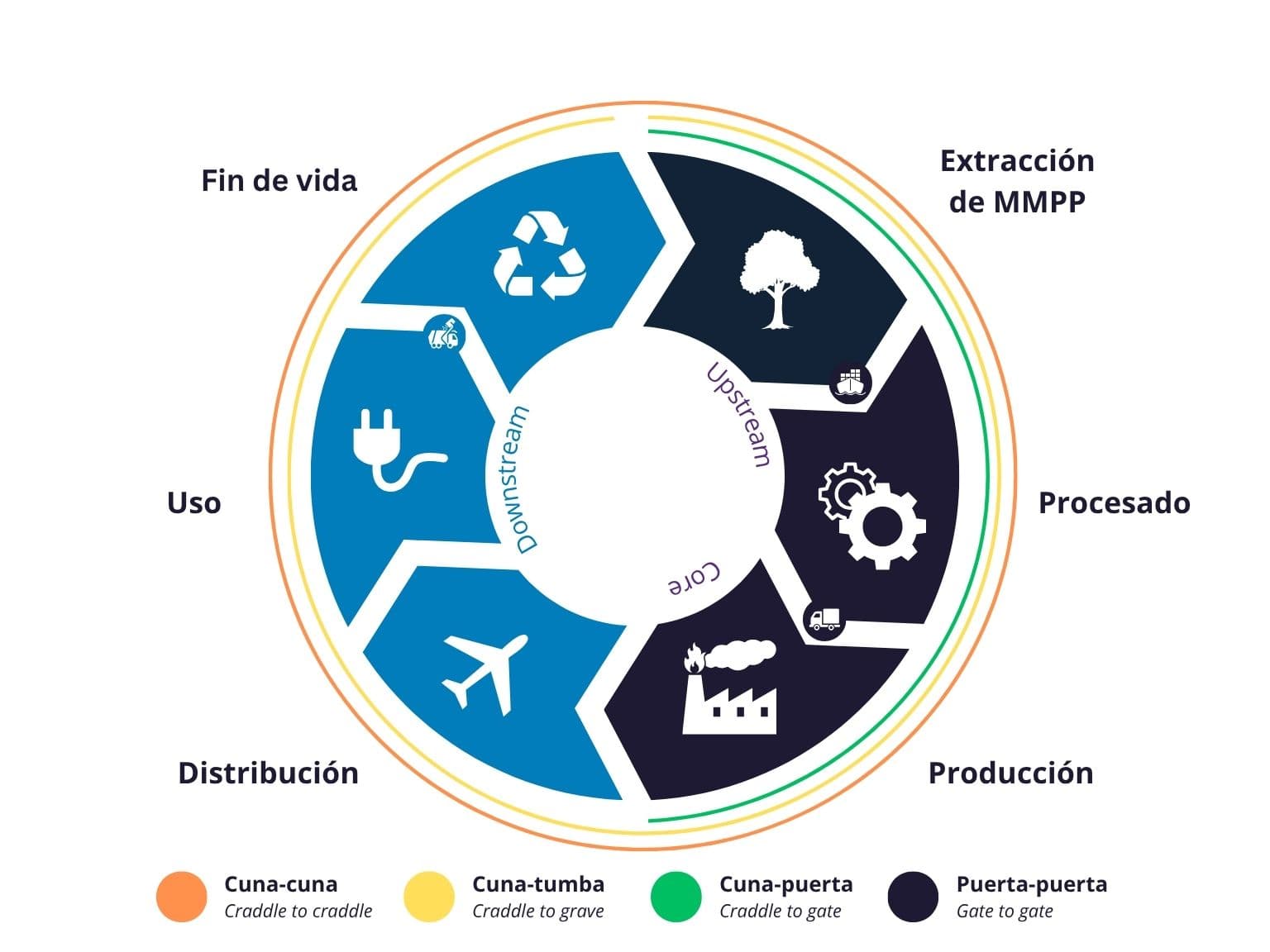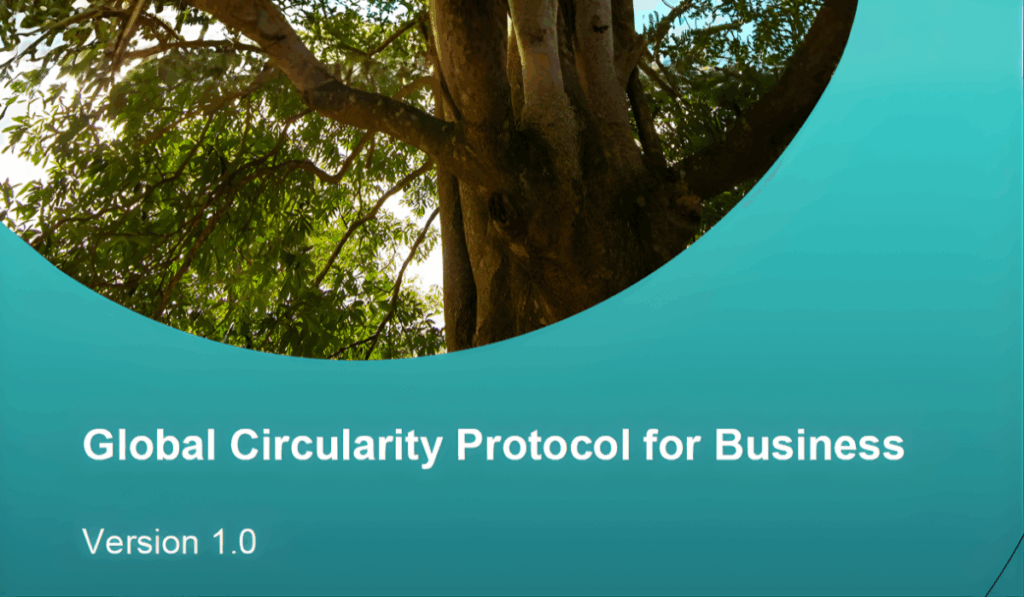In a context where the circular economy is becoming established as a sustainability strategy, it is no longer enough to optimise isolated business processes. It is necessary to broaden the approach and consider the entire value chain—from raw material extraction to the use and final disposal of materials. The life cycle perspective allows exactly that: analysing the impact at each stage and identifying concrete opportunities for environmental improvement and efficiency.
According to international standards, life cycle assessment (LCA) is a rigorous, objective, and systematic methodology that quantifies the environmental impacts of products, services, or processes throughout their entire life cycle.
What is life cycle assessment?
Life cycle assessment (LCA) is an environmental evaluation tool that allows for an objective, systematic, and scientific analysis of the potential environmental impacts generated by a process, product, and/or service throughout its entire life cycle. It is a standardised assessment methodology that provides a comprehensive view of all environmental impacts associated with a system: resource consumption, emissions, and waste generation at each stage of the life cycle.
Its methodological framework includes:
- Goal and scope definition: defines the purpose of the analysis, the functional unit, system boundaries, methodological choices, and target audience.
- Life cycle inventory (LCI): collects inputs (energy, materials, water) and outputs (emissions, waste, by-products).
- Life cycle impact assessment (LCIA): translates LCI flows into environmental effects based on categories such as climate change, acidification, eutrophication, toxicity, etc.
- Interpretation: analyses results to identify hotspots, assess uncertainty, and recommend improvements

How is it applied?
ISO 14040 and 14044: the foundation of life cycle assessment
LCA follows a set of international standards and guidelines that ensure a consistent and transparent methodology, guaranteeing the quality and comparability of results:
- ISO 14040: defines the general framework and basic principles (goal definition, scope, data collection, etc.)
- ISO 14044: complements ISO 14040 and includes the detailed requirements and guidelines
Types of LCA
Depending on the study’s goals and context, the depth of the analysis can be adapted. Thus, it can be distinguish between different types of LCA:
- Conceptual LCA: a qualitative study aimed at identifying the most significant potential impacts
- Simplified LCA: a quantitative study limited to the most relevant stages, accompanied by an analysis of the reliability of the results
- Full LCA
The choice between these approaches will depend on the decisions the assessment is intended to support, making it possible to adapt LCA to different scales and contexts within a company’s environmental strategy.

Types of LCA system boundaries
Another key decision when conducting an LCA is defining the type of system boundary, that is, which stages of the life cycle are included in the analysis. This directly affects the representativeness of the results and their usefulness for decision-making.
The most common types of boundaries are:
- Cradle-to-gate: includes all stages from raw material extraction to the product leaving the factory. Widely used for comparing products during the production phase.
- Cradle-to-grave: covers the entire life cycle, including distribution, use, and end-of-life. This is the most comprehensive approach.
- Cradle-to-cradle: similar to cradle-to-grave, but incorporates recycling or reuse of the product, following a circular economy approach.
- Gate-to-gate: limited to a single stage of the process (productive stage), useful for internal studies or operational comparisons.
Tools and databases for conducting an LCA
To carry out a rigorous and traceable life cycle assessment, it is essential to use specialised tools that allow the modelling of input and output flows at each stage of the system.
Among the most widely used software tools internationally are:
- SimaPro: widely adopted in academic and industrial settings; enables complex, multi-criteria LCAs.
- OpenLCA: a free and open-source tool, with multiple modules and compatible with databases such as ecoinvent.
- GaBi: widely used in business environments, with an interface optimised for integrating real process data.
- Umberto LCA+: specialised in visual process modelling and material and energy flow tracking.
These tools rely on well-known databases such as:
- ecoinvent: one of the most comprehensive and widely used worldwide.
- Agri-footprint: for agri-food systems.
- ELCD: European reference database.
- US LCI: for North American processes.
The choice of software and database will depend on the sector, the availability of data, and the level of accuracy required.
How LCA supports other metrics and frameworks
Life cycle assessment (LCA) provides a common methodological foundation for numerous environmental metrics. Its structured approach allows for the alignment of indicators, the avoidance of duplication, and the development of a more coherent and robust measurement system.
Among the metrics based on LCA are:
- Organisational life cycle assessment, according to ISO 14072.
- Product carbon footprint, according to ISO 14067.
- Water footprint, in line with ISO 14046.
- Product Environmental Footprint (PEF), promoted by the European Commission.
- Environmental Product Declarations (EPDs), key in sustainable construction, public procurement, and the upcoming Digital Product Passport.
This integrated approach is particularly useful in the context of regulations such as the CSRD or the EU Taxonomy, which require companies to justify their impacts and decisions using technical, traceable, and verifiable criteria. LCA is also compatible with various environmental labelling schemes, such as the EU Ecolabel, enabling companies to build a strong and market-aligned environmental strategy.
Having LCA results allows companies to understand—based on evidence—where their most significant impacts lie, which measures can have the greatest effect, and how to respond with solid arguments to clients, regulators, or auditors.
At Baisma, we help calculate, interpret, and translate data into concrete decisions: from large companies that need to comply with requirements such as the CSRD or the EU Taxonomy, to small and medium-sized businesses taking their first steps toward building an environmental strategy. We help make sustainability actionable and meaningful—without unnecessary complications.
Interested? Get in touch.
Insights sugeridos

Integrating biodiversity and natural capital into corporate strategy

Global Circularity Protocol v1.0: What it is and how it applies to business

Circular economy indicators: basics, frameworks and how to apply them
